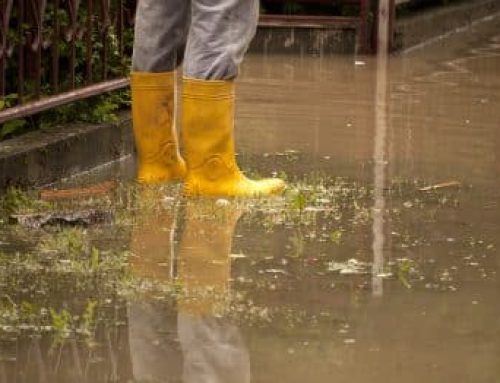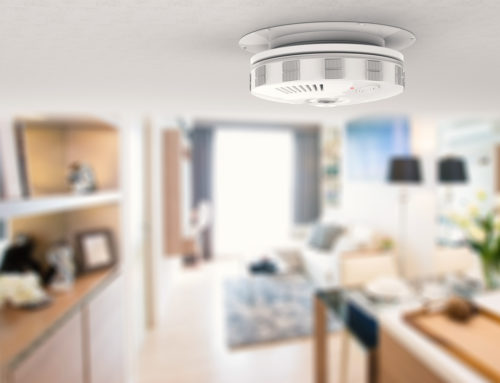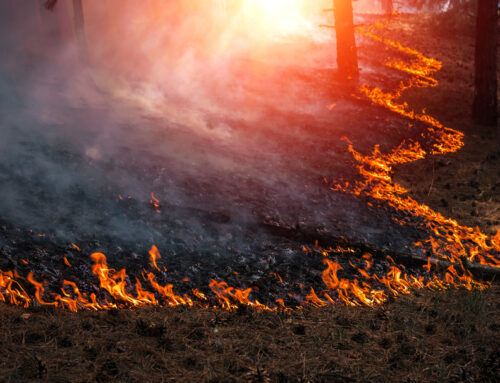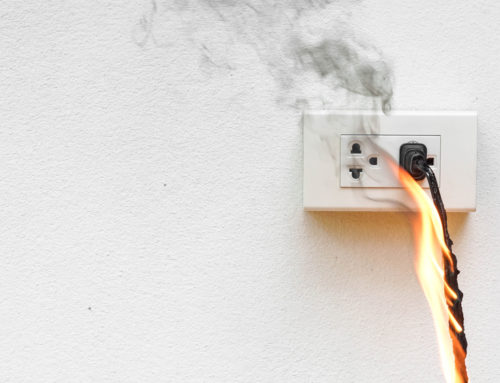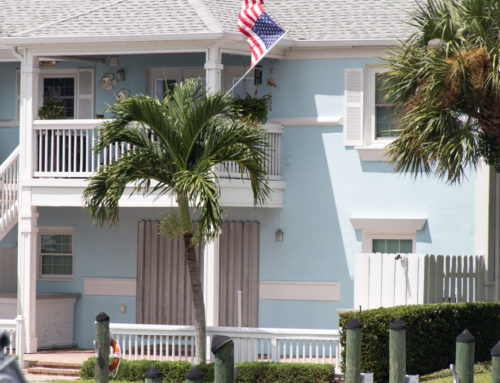Winter is here and an increased threat of property fires comes with it. Although a fire may be directly caused by someone else, as an investor, you can still take steps to prevent these severe losses from occurring on your property. Let’s explore what you can personally do to mitigate the five most common fire causes at investment properties.
1. Cooking Fires
Cooking fires most often occur when the cook gets distracted or leaves items cooking on the stove unattended. To help your tenant chefs cook responsibly, you can:
- Properly install smoke detectors throughout the house. They should be installed inside every bedroom, outside each sleeping area, and on every level of the home, including the basement. Inspect them monthly to make sure they are in working condition and your tenants haven’t deactivated them when they were “chirping” for a new battery. Standard batteries should be changed at least twice a year and alarms need to be replaced about once every ten years. For more tips on smoke alarms from the National Fire Protection Association click here.
- Place fire extinguishers in the kitchen and other main gathering areas like hallways, the living room, the basement, and the garage. Fire extinguishers can help put out small fires before they become uncontrollable; providing them in your rentals is a must but educate your tenants on their use too! Extinguishers should be placed where they are readily accessible and along normal paths of travel so the occupant can easily grab one in the event of a fire. Multi-purpose extinguishers like ABC or BC types can put out a variety of fires and you might consider a type K extinguisher for the kitchen as they help put out grease fires.
- Install fire suppression products like StoveTop FireStop in your rentals. StoveTop FireStop is an inexpensive fire suppression device that can help put out a cooking fire before the cook has time to grab a lid or standard extinguisher. Mounted under the rangehood over the burners, these devices are activated when a fire’s flame reaches the product’s small fuse. Extinguishing powder is then released down onto the stove. The loud “pop” of the can opening may also alert the distracted cook so they can return to the kitchen to turn off the burners. Check with your insurance for rate savings when installing StoveTop FireStop.
Related Reading: “Cooking Fires: The Most-Preventable Household Killer”
2. Heating Fires
Out of fear of a higher heating bill, some tenants will opt for more dangerous methods of warming up their homes. Two scenarios we see more often than we’d like are people heating their homes with their ovens or improperly using a space heater – or set of space heaters. To ensure your tenants heat their homes safely, you can:
- Have all fireplaces and chimneys inspected before the cold season hits. Hiring a professional chimney sweep to give your fireplace the ok before use each year is more cost-effective than paying your insurance deductible. The inspection will reveal the health of the chimney and allow any fixes to be made before a chimney fire can occur.
- Educate your tenants about the risks of using space heaters. You may even want to include specific instructions for their use in your lease. Space heaters should NOT be used as the primary heating source in the house. Furthermore, any space heater in use should be newer and equipped with safety features such as auto-shut-off if knocked over. Space heaters must never be used with an extension cord but plugged directly into an outlet. Lastly, any time they are in use, one should keep a 3-foot safety zone around the heater and should never be left unattended or run overnight.
- Prohibiting the use of the oven as a heating apparatus for the house should also be included in your lease. A gas oven may go out or burn inefficiently, leading to carbon monoxide poisoning. Running an oven on high heat for an extended period may overload the circuit causing yet another type of fire risk. Using an oven to heat the house is both inefficient and dangerous.
3. Dryer Fires
Ah, yes, warm sweaters, jeans, and fluffy blankets. This means more lint in your dryer’s lint trap too – lint that if not cleaned out regularly can lead to a fire. You can avoid a dryer fire through these simple steps:
- Instruct tenants to check dryer lint screens in between every load of laundry and clean them frequently.
- During your scheduled inspections, check the condition of dryer vents to make sure there aren’t any blockages or lint buildup that can cause the dryer to overheat. And of course, if you discover a blockage, clean out the vent!
- Clean dryer vents and hoses at least once a year to prevent lint and dust buildup which are fire hazards.
4. Electrical Fires
During the months with more extreme temperatures, your electrical system will have a higher load placed on it. However, you can avoid any “shocking” fires by doing the following:
- Make sure your electrical system is up to code and in good working order prior to anyone moving in. Though older systems with Knob-and-Tube or aluminum wiring may still technically function, it is best to replace the connectors or the entire system. Knob-and-Tube wiring has no ground so it cannot service any three-pronged appliances and can be particularly dangerous where building insulation envelops the wires, states the International Association of Certified Home Inspectors. Aluminum wiring becomes weaker over time at its connection points (i.e. near outlets and other junctions) making them prone to arc or overheat, causing a fire. Aluminum wiring may be ok if it is “pigtailed” but be sure you use a licensed and insured electrician for any electrical work.
- Promptly remedy any electrical issues your tenant reports to you. If your tenant leaves you a message about an outlet or lighting fixture sparking (or any other hazard), make sure your response is swift! Again, be sure anyone who works on your electrical system has the proper credentials. The work is more likely to be done correctly, and if something does go wrong, it will protect you from personal liability arising from property damage or worse, any injuries, caused by their work.
5. Squatter Fires
If you have a property that is vacant for any number of reasons – waiting to start a remodel, on the market for sale, or in-between tenancy – you will need to make sure it is adequately protected from intruders. We associate vacant properties and arson, but other types of vandalism and drug activity may also lead to a fire. In colder climates, someone seeking shelter from the elements may start a fire to keep warm, and not always in the fireplace! To protect vacant properties:
- Board up and secure properties that are expected to have long vacancies without work being done. If you have purchased a property with the intent to rehab it but won’t be able to get to it for a while, it is best to board it up! FEMA has a great guide to help you with a standard plywood board-up. Depending upon the jurisdiction, you may be required to use clear composite board-up materials, so just be sure you are following local ordinances. Aside from the composite types, there are also several companies that make metal screens as well.
- Install a security system. Though an alarm sign may not scare off all criminals, it may make them choose a different house than yours. If your business model includes a lot of rehab projects, you might want to select a system that is portable like a tattletale alarm. The easiest target on the block loses, so make sure yours is the more difficult one to breach. You may think of a security system as just the alarm itself, but your defense should also include sturdy locks and door reinforcement too. Consider reinforcing your exterior doors with Door Armor and don’t forget your basement windows. They often provide an easy access point into the house and contain expensive housing components like water heaters, the furnace, pipes, and wiring.
- Let the appearance of your house send the message that it’s cared for and regularly maintained. In other words, you want thieves and vandals to feel that anyone could stop by at any time and catch them in the act. Keep the yard cut and clean. Trim back trees and shrubs that may block views of the house and provide thieves places to hide. Make sure mail and advertisements don’t build up in the mailbox and any newspapers are collected from the driveway. A well-lit exterior can also discourage thieves from approaching your house at night. Motion detector lights are always a good addition, just be sure to place them at a height where they can’t be easily dismantled. Lastly, don’t forget a plan of action for lighting the interior too – timers can be a good solution there.
- Visit your property frequently. Abandon your property and it’s almost guaranteed something bad will happen to it. Of course, you can’t be there 24/7, but you can solicit neighbors to keep an eye on anything they see. Otherwise, make sure you have a regular schedule for dropping by to make sure things are still secure.
We hope shedding light on these five areas of risk will help you avoid a costly fire in colder months. As always, our best to your investing!


